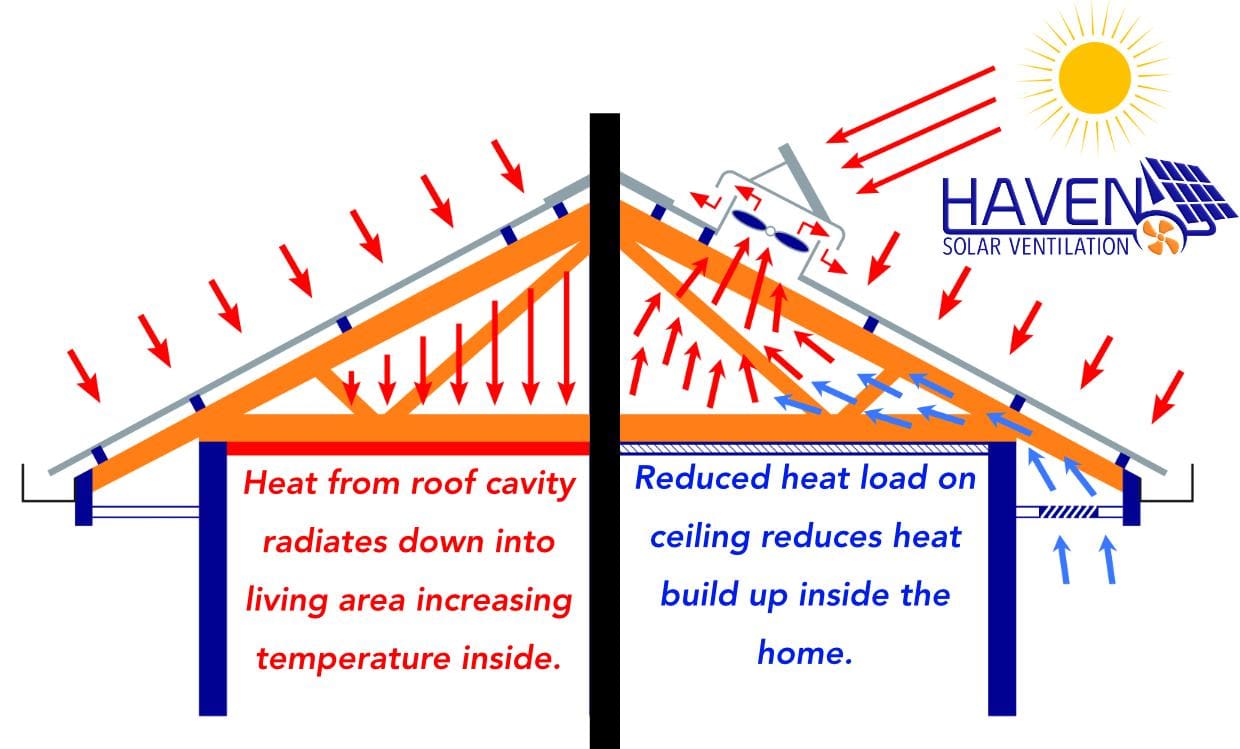Solavent vs Haven Solar Ventilation: Which Solar Roof Vent is Right for You?
January 21, 2025
In the Australian climate, managing indoor temperatures effectively and efficiently is paramount. Traditional whirlybirds have long been a go-to for roof ventilation, using wind power to extract hot air from ceiling spaces. However, the innovation of solar whirlybirds has introduced a more consistent and energy-efficient solution, especially for those hot, windless days typical in many parts of Australia.
What Are Solar Whirlybirds?
Solar whirlybirds are an advanced version of traditional roof ventilators that use solar power to operate. Unlike their traditional counterparts that depend on wind, solar whirlybirds have a built-in solar panel that powers a motor, which drives the fan to ventilate the roof space continuously throughout the day. This system ensures effective air movement regardless of wind conditions, making it particularly beneficial during the sweltering Australian summers.
Efficiency and Cost-effectiveness
One of the standout features of solar whirlybirds is their ability to function without relying on external electricity sources, thus reducing energy costs and environmental impact. They can be up to 10-30 times more efficient in heat extraction compared to standard whirlybirds, offering a significant improvement in reducing indoor temperatures and preventing heat buildup. This efficiency not only makes homes more comfortable but also contributes to lower air conditioning use and energy bills.

Installation and Sustainability
Installing a solar whirlybird is straightforward and can be adapted to both new and existing homes. Most models are designed to be low-maintenance and durable, capable of operating even in low-light conditions, which extends their usability across different seasons and weather conditions.
Environmental Impact
By utilizing renewable solar energy, solar whirlybirds align with eco-friendly practices. They play a crucial role in reducing the carbon footprint of households, making them a preferred choice for environmentally conscious homeowners. Additionally, the effective ventilation provided by these devices helps in prolonging the lifespan of roofing materials by preventing moisture buildup and heat damage.
A Comparative Look
When compared to traditional whirlybirds, solar variants clearly have the upper hand in both performance and reliability. They overcome the limitations of wind-dependent systems, such as noise issues and inefficiency during calm weather. Moreover, the integration of solar power enhances their appeal as a sustainable home improvement solution.
Conclusion
The shift towards solar whirlybirds reflects a broader trend of adopting renewable energy solutions in residential settings. With their superior efficiency, ease of installation, and environmental benefits, solar whirlybirds offer Australian homeowners a practical and sustainable way to keep their homes cool and comfortable. Whether upgrading from traditional models or installing new, these solar-powered ventilators are a smart investment towards a cooler, more sustainable home environment.
For homeowners looking to improve their home’s ventilation system, the choice between traditional and solar whirlybirds is clear. The latter not only provides greater efficiency and reliability but also aligns with the growing emphasis on sustainable living.